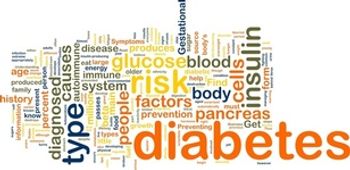
Cardiovascular
Latest News

Latest Videos

CME Content
More News


Panelists discuss what PCSK9 inhibitors are, the evidence to support them, and challenges with operationalizing them in practice.

Researchers found that a prescription for healthy food can improve health outcomes for beneficiaries in Medicare and Medicaid.

For SGLT2 inhibitors and a fish oil capsule, there was plenty of good news; for aspirin, not so much. A recap of the American College of Cardiology's 68th Annual Scientific Session, held March 16-18, 2019, in New Orleans, Louisiana.

If approved the oral form of semaglutide would be the first pill in the GLP-1 receptor agonist class.

New results presented at the American College of Cardiology's 68th Annual Scientific Session find a high-dose fish oil pill reduced the risk for first and future cardiovascular events among patients taking statins by 30%. The early results grabbed headlines last fall in part because researchers aren't entirely sure how the capsule works.

New findings show reduced hospitalizations for a wide group of patients with heart failure. For high-risk patients with reduced ejection fraction, the drug appears to cut deaths, but more studies will answer these questions.

The joint guidelines from the American College of Cardiology and the American Heart Association call on clinicians to pay more attention to social determinants of health. They were announced Sunday at the 68th Scientific Session of the American College of Cardiology in New Orleans, Louisiana.

The 68th American College of Cardiology Scientific Session and Exposition opens with a study that suggests the Apple Watch can detect atrial fibrillation with a reasonable degree of accuracy, giving people an opportunity to get in touch with their doctor before a serious event like a stroke.

In recent years, the big news on the first day of the American College of Cardiology (ACC) Scientific Session and Exposition has involved a therapy—usually an expensive cholesterol drug with a name almost no one could pronounce: proprotein convertase subtilisin/kexin type 9 (PCSK9) inhibitors. This year, it's tech, and an easy-to-pronounce name: Apple.

Researchers have confirmed that there is no link between flu shots and miscarriages; a liquid biopsy is as effective as tissue-based testing for identifying treatment for lung cancer; and physicians generate an average of $2 million a year for hospitals.

Atherosclerotic cardiovascular disease (ASCVD) is not only a leading cause of mortality among US adults, but also responsible for high medical costs that burden both the healthcare system and individual patients. New research shows that 1 in every 5 patients with ASCVD is unable to afford his or her medical bills, and even among patients with insurance, financial hardship related to medical costs is prevalent.

The American Journal of Managed Care® (AJMC®) recently spoke with Om P. Ganda, MD, medical director of the Lipid Clinic and chair of the Clinical Oversight Committee at the Joslin Diabetes Center in Boston, Massachusetts, about the recent publication of the 2018 American College of Cardiology (ACC) Expert Consensus Decision Pathway (ECDP).1

Javed Butler, MD, MPH, MBA, discusses the 2018 American College of Cardiology Expert Consensus Decision Pathway, which includes guidance on the use of SGLT2 inhibitors and GLP-1 receptor agonists, and its potential to change the treatment paradigm for patients with type 2 diabetes.

The National Institutes of Health halted the landmark SPRINT study in 2015 after results clearly showed a cardiovascular benefit for patients who had their systolic blood pressure aggressively controlled to 120 mm/Hg.

The partnership will seek repeatable, scalable models to present at a summit later this year.

The study is first to measure sleep along with spread of atherosclerosis throughout the body, according to the American College of Cardiology.

Keeping patients with diabetes motivated is the most challenging part of exercise, the authors say, as they call for psychologists and counselors to be part of the care team.

The analysis discusses the strength of evidence that SGLT2 inhibitors have a class effect in preventing heart failure for patients with diabetes.

The chief executive officer and president of CVS Health said the integration of CVS and Aetna is well underway—even while it complies with a US district court that is reviewing the deal—more than a month after the acquisition closed.

The initial trial made news because the results were at odds with ACCORD. This new analysis highlights the need for personalized diabetes care, especially among older adults.

Findings in Hypertension, published by the American Heart Association, suggest a need to identify those at early risk of dementia.

With everyone carrying a smartphone, there's no reason why digital health tools and apps cannot be leveraged to hold at-risk patients accountable for cardiovascular health.

Here are the top 5 articles for the month of December.




















































